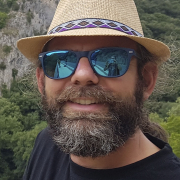
Copyright : Laboratoire LEMAR- 2018
Julien Thébault (UBO) & Bernd R. Schöne (JGU)
European project
PRCI (Projet de Recherche Collaborative – International)
Financement ANR (France) et DFG (Allemagne)
Start Date
03/04/2025
End Date
03/04/2025
Primary producers form the basis of marine food webs, control population sizes at higher trophic levels and fish stock recruitment. Marine photoautotrophic organisms are also responsible for nearly half of the global net primary production, i.e., they replenish the ocean (and atmosphere) with oxygen and fix substantial amounts of carbon. Despite its outstanding relevance for the functioning of marine ecosystems and global climate, past primary production dynamics and mechanisms controlling them are not well characterized. This is particularly true for nearshore coastal environments and for times prior to significant human perturbation of biogeochemical cycles. Available data sources for changes in marine primary production (i) do not provide the necessary temporal resolution to resolve short-lived and spatially restricted phytoplankton blooms, specifically in shallow waters, (ii) are too short to distinguish trends from low-frequency cycles of primary production and (iii) do not cover the entirety of photoautotroph taxa which include more than just phytoplankton and cyanobacteria, i.e. microphytobenthos and macroalgae.
Therefore, this project will develop an innovative technique that can provide reliable, temporally well-constrained, seasonally to inter-annually resolved data on past primary production dynamics in coastal nearshore environments based on shells of bivalve mollusks. For this purpose, we will test and refine existing proxies (surrogates) for primary production, and develop new proxies and integrate them in a multiproxy approach. In order to obtain a mechanistic understanding of how information on the species composition and number of marine photoautotrophs is recorded in chemical properties (Ba/Ca, Mo/Ca, Li/Ca, stable isotopes of carbon and nitrogen, triple isotope composition of oxygen, pigments) and color (hue and saturation index) of the shells, field and tank experiments will be conducted during which environmental variables can be closely monitored and manipulated. Since the study involves experiments with living bivalves we chose the fast-growing species, Pecten maximus, and an ecosystem that has been studied in great detail, the Bay of Brest, France.
The multiproxy approach will subsequently by applied to subfossil shells collected from an archaeological site to determine the human impact on primary production dynamics of the Bay of Brest including (i) the seasonal occurrence of photoautotrophs as well as the intensity, frequency and seasonal timing of phytoplankton blooms, (ii) shifts in species composition and biomass through time and (iii) changes in the link between organisms inhabiting the sea floor and those living near sea surface. Results of this study will significantly advance marine sciences including paleoecology, paleoclimatology and fisheries sciences.
HIPPO is a French-German joint project, co-funded by the French National Research Agency (ANR) and the German Research Foundation (DFG). Principal investigators are Dr. Julien Thébault (University of Brest) and Prof. Dr. Bernd R. Schöne (Johannes Gutenberg-Universität Mainz). This project will start in September 2019 for 3 years.

 Claire HellioEcoFoulPest
Scroll to top
Claire HellioEcoFoulPest
Scroll to top